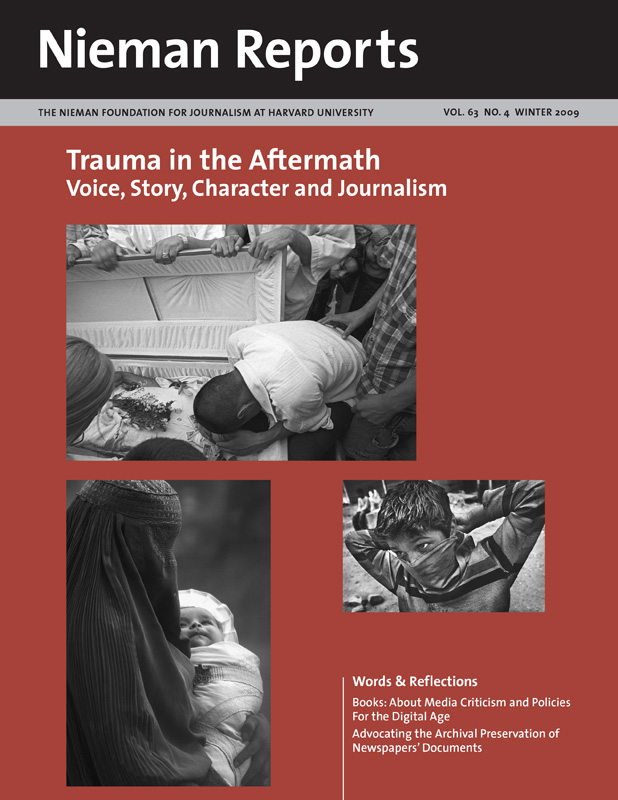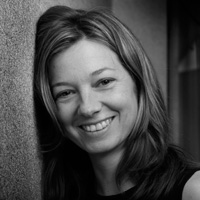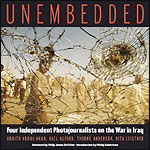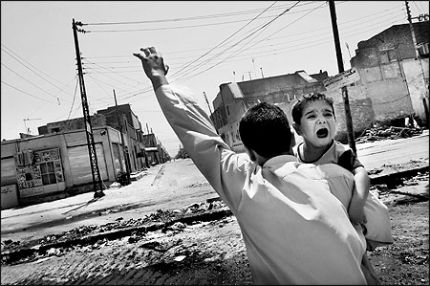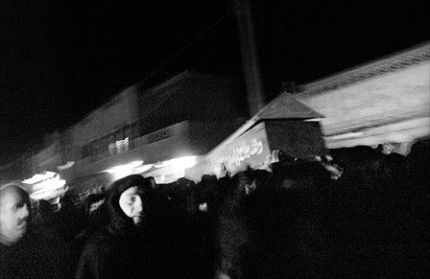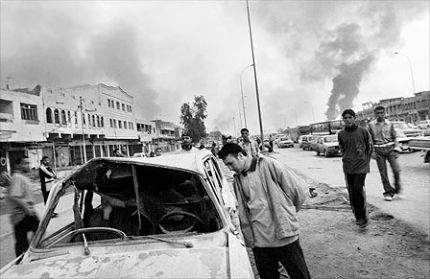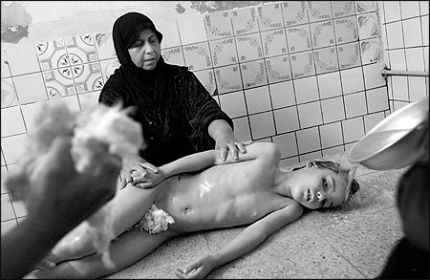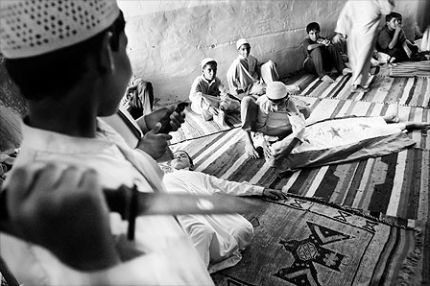Kael Alford is a documentary photographer, photojournalist and teacher whose work has been published globally in magazines and is featured in the book, “Unembedded: Four Independent Photojournalists on the War in Iraq.” From 1996 to 2003 she worked in the Balkans covering Yugoslavia’s disintegration, the war in Kosovo, and the conflict in Macedonia. In the West Bank in 2002, she photographed the Israeli forces’ incursion into the Jenin refugee camp. A 2009 Nieman Fellow, she focused her talk at the “Aftermath” conference on her work as a photojournalist in Iraq. Edited excerpts follow:
These photographs are from 2003 to 2004, some from when I was in Iraq for about three weeks before the invasion and stayed throughout the bombing in Baghdad, which was where I really wanted to be to show what it looked like under the guns of the most powerful military in the world. I didn’t think that was the story that Americans were largely going to hear. My photographs from 2004 will show the beginning of the Iraqi resistance movements. I worked in Iraq as a freelance photographer who was not embedded with military troops. The San Francisco Chronicle gave me a small advance to go to Iraq, so I had some money and some support of a couple of colleagues to make this work.
Much of the time I was in Iraq I felt as though I was living in sort of this parallel universe where I was telling stories that weren’t the major stories being reported for audiences in the United States.
There are a huge number of refugees from and displaced people in Iraq. Now, one refugee agency says five million people have been displaced by the war, both internally and externally. That’s just a phenomenal figure, so it’s hard for me to understand why that isn’t one of the leading headlines we see every day since this is the consequence of a war that this country is responsible for. And there’s another million or so dead. Those numbers are disputed, but I think they are reasonable figures.
Early on in the war, I felt that the consequence of this U.S. bombing and this invasion on Iraqi civilians was going to be missing from the dominant news narrative in the United States. So whenever I could I would go to bombing sites where I’d spend lots of time in hospitals covering the wounded as they came in. Then I would try to get to the truth of what I was seeing. We were very closely controlled by the Mukhabarat so we were not allowed to see everything and we could go to bombing sites when they allowed us or took us there.
It was important that these photographs made it to the U.S. media and the Chronicle would publish them. I was working with a writer, and the paper also had a writer embedded and a photographer embedded so its coverage was being told in these two threads, from two sides, which I thought was important. Not every U.S. media outlet had the opportunity to do that.
As soon as Baghdad fell in April 2003, I went to Ramadi and Fallujah and Anbar province. This is an interesting place culturally for Iraq and I wanted to see what would happen there. I spent as much time as I could there and got to know a couple of local families and the sheik sort of let us stay at his house just outside of Ramadi. We’d stay for a week at a time and get to know his family and learn the social fabric of this place. It was interesting to watch community leaders get together and discuss questions such as, “How do we respond when a family member gets killed or when something goes wrong? How should we respond to the Americans? Should we fight back? Should we ask them to leave? Should we talk to the generals?” There was so much discussion on their side of how reasonably they should react to these events. That was really striking to me. They decided they’d let the Americans arrive in their community and wait and see what happened. They weren’t going to fight. So it was a very deliberate decision on their part not to fight.
In 2004 when I went back to Iraq, I went back to this place and spent time with resistance fighters because I had made some inroads with this family. They trusted us well enough to let us interview them and spend a lot of time with them. And they would take us to the sites of attacks after they occurred and they would tell us why they were fighting. At this time, I was working with another freelancer who was trying to work for The New York Times Magazine. They killed the story because no one believed us that these were actual fighters and that they were telling us the reasons why they were fighting. The story then got killed by major magazines, and finally got published in Harper’s Magazine in 2004. It was called “Beyond Fallujah: A Year with the Iraqi Resistance” and won an Overseas Press Club Award.
By August 2004 we went to Najaf and with these Mahdi Army fighters who we’d gotten to know through contacts we’d made earlier in Iraq, we were able to go inside the frontline between the U.S. forces and the fighters and cover it from the side of the resistance fighters.
Alford talks in greater detail about what she was hearing and observing at the beginning of the Sunni resistance in Anbar province.
Alford explains how she and her colleagues negotiated with American and Mahdi commanders so they could move around Najaf with some degree of safety, especially when tensions were rising as word came of a possible plan to bomb the shrine of Imam Ali.


